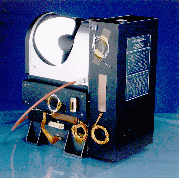Who Built TES?




In response to a NASA request for instrument proposals, Dr. Phil Christensen developed the idea of TES. His experience as a graduate student at UCLA exposed him to Mars exploration. It was there that he worked with data from the Infrared Thermal Mapper. The IRTM was a more primitive version of TES that flew on the two Viking orbiters in 1976. In 1983, when NASA called for instruments to fly on board the planned Mars Observer spacecraft, Phil answered with the TES concept. He assembled many of the same IRTM engineers from the Hughes Santa Barbara Research Center (SBRC), to help design and build TES. A team of scientists also was recruited by Phil to help guide the process. One of these scientists, Dr. Hugh Kieffer, was the principal investigator for the IRTM instrument.
A Small Army of Talent
The design, development, and construction of a space-bound instrument is a major undertaking. Every component of such an instrument must survive the intense vibrations of a rocket launch and the extreme temperatures in the vacuum of space. The instrument must perform its job in this environment for extended periods of time. The men and women who produced the TES instrument at SBRC and Arizona State University responded to the challenge with great ingenuity and hard work. Some of the hands and minds behind the TES posed for a picture following a rigorous vibration test. They and the rest of the dedicated army of individuals who made TES a reality, had the privilege of signing their names to a plaque that has accompanied TES to Mars. Among the signatures is a tiny piece of Mars that will be returned to its parent body.

back to TES instrument description
back to What is TES?